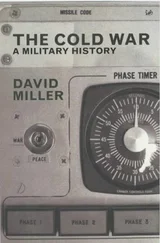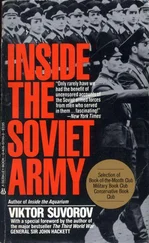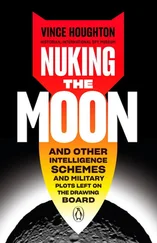Viktor Suvorov - Inside soviet military intelligence
Здесь есть возможность читать онлайн «Viktor Suvorov - Inside soviet military intelligence» весь текст электронной книги совершенно бесплатно (целиком полную версию без сокращений). В некоторых случаях можно слушать аудио, скачать через торрент в формате fb2 и присутствует краткое содержание. Год выпуска: 1984, ISBN: 1984, Жанр: Публицистика, Прочая документальная литература, на английском языке. Описание произведения, (предисловие) а так же отзывы посетителей доступны на портале библиотеки ЛибКат.
- Название:Inside soviet military intelligence
- Автор:
- Жанр:
- Год:1984
- ISBN:0-02-615510-9
- Рейтинг книги:3 / 5. Голосов: 1
-
Избранное:Добавить в избранное
- Отзывы:
-
Ваша оценка:
- 60
- 1
- 2
- 3
- 4
- 5
Inside soviet military intelligence: краткое содержание, описание и аннотация
Предлагаем к чтению аннотацию, описание, краткое содержание или предисловие (зависит от того, что написал сам автор книги «Inside soviet military intelligence»). Если вы не нашли необходимую информацию о книге — напишите в комментариях, мы постараемся отыскать её.
Inside soviet military intelligence — читать онлайн бесплатно полную книгу (весь текст) целиком
Ниже представлен текст книги, разбитый по страницам. Система сохранения места последней прочитанной страницы, позволяет с удобством читать онлайн бесплатно книгу «Inside soviet military intelligence», без необходимости каждый раз заново искать на чём Вы остановились. Поставьте закладку, и сможете в любой момент перейти на страницу, на которой закончили чтение.
Интервал:
Закладка:
The possibility of nuclear land mines being used completely disrupted all Soviet plans for a blitzkrieg attack on Europe. The general staff, the Ministry of Defence and the Central Committee would now have to find new ways of attack, new methods of employing their troops and ways and means of surmounting strong radioactive fallout caused by the underground explosions. In a word, all tactics, operational methods and strategic plans would have to be changed. All this was thanks to the fact that the new NATO tactics had become known to the general staff in good time.
Chapter Eight
Tactical Reconnaissance
There is yet another level to the practice of military intelligence. Intelligence organs and detachments subject to tactical units and formations of divisional strength and below, which facilitate their military operations, come under the heading of tactical reconnaissance. Their activities are under the full control of operational intelligence, which of course comes under the control of the GRU central apparatus. So all tactical reconnaissance organs have, in exactly the same way as operational intelligence organs, a twofold subordination. The head of reconnaissance of a division is subordinated to the chief of army intelligence, more accurately the first group of the Army Intelligence Department. The chief of regimental reconnaissance is subordinate to the regimental chief of staff and the chief of divisional reconnaissance. Each motorised-rifle and tank division has on its strength an independent reconnaissance battalion. The word 'independent' shows that the battalion does not form part of the regiment but is directly subject to the divisional staff. Each of the four motorised-rifle and tank regiments on the strength of a division has a reconnaissance company. Reconnaissance companies are controlled by the regimental reconnaissance chiefs. Artillery and anti-aircraft missile regiments are not included as their reconnaissance detachments are not active in the enemy's rear.
A divisional independent reconnaissance battalion consists of a headquarters, a deep reconnaissance company, two reconnaissance companies, a company electronic reconnaissance and auxiliary services.
Deep Reconnaissance
The deep reconnaissance company is the smallest but the best of all the companies and batteries of the division. There are twenty-seven men in the company including six officers and an ensign. It has a small headquarters of the commander and a sergeant-major, and five reconnaissance groups of four men, each with an officer at its head. There is a total of six jeeps, each group having one and one for the commander.
The company's task is to discover and destroy enemy rocket launchers in its divisional sector. Deep reconnaissance groups are deployed in the enemy's rear by helicopter, either with or without their jeeps, to depths of from thirty to 100 kilometres.
On discovering an enemy rocket installation, the group immediately reports it to the staff. Should the rocket be ready for launching, the group must attack it. However, unlike the Spetsnaz groups, the group will not kill its wounded unless the action is on foot - a rare occurrence. The deep reconnaissance company may also be called upon to kidnap staff officers and to hunt for their staffs, but only in cases where the commander of a division is certain that there are no enemy nuclear facilities in his divisional sector.
The Reconnaissance Companies of the Battalion have exactly similar organisation. In each company there are three tanks, seven reconnaissance vehicles and ten motorcycles.
The Electronic Reconnaissance Companies have eighty men and thirty vehicles with electronic equipment. The company operates only from its own territory. Among its tasks are intercepting and deciphering radio conversations of the enemy, taking bearings on radio stations and radio locators, and monitoring the extent to which its own side observes radio security regulations.
Each motor-rifle and tank regiment has its own reconnaissance company. Regimental companies operate at a depth of up to fifty kilometres as against the battalion company's operation to eighty kilometres. All these companies penetrate enemy territory under their own power, using gaps in the enemy's defence. The basic method of obtaining information is the capture and cruel interrogation of prisoners.
The Soviet army has approximately 180 motor-rifle and tank divisions. Many of these, especially those deployed in the rear, are under strength. Undermanning is never allowed, however, in the case of reconnaissance detachments. There is about the same number of independent reconnaissance battalions, and there are also about 700 regimental reconnaissance companies. In other words there are about 95,000 men directly under GRU command in tactical reconnaissance. We have not included in this number the strength of chemical, engineering and artillery reconnaissance companies independent of these.
Chapter Nine
The Training and Privileges of Personnel
These are the educational institutions which take part in the training of personnel for Soviet military intelligence: the Intelligence Faculty at the General Staff Academy; the Training Centre of Illegals; the Military-Diplomatic Academy; the Reconnaissance Faculty of the Frunze Military Academy; the Reconnaissance Faculty of the Naval Academy; the Special Faculty of the Military Signals Academy; the Military Institute of Foreign Languages; the Cherepovetski Higher Military Engineering School for Communications; the Special Faculty of the Higher Military Naval School of Radio Electronics; the Spetsnaz Faculty of the Ryazan Higher Parachute School; the Reconnaissance Faculty of the Kiev Higher Military Command School; and the Special Faculty of the Second Kharkov Higher Military Aviation and Engineering School.
This list gives an impression of the extent of the training of specialists for the GRU system. Some of these educational establishments are devoted exclusively to this work, others have only one faculty. However, in any case, we are talking of many thousands of first-class specialists who go into military intelligence every year. All the higher military schools give instruction at university level to their students. The best of these subsequently enter the academies which provide a second university education.
Students entering the Soviet Army's higher military training establishments undergo a period of instruction which lasts for four to five years. The minimum age is seventeen, maximum twenty-four. Candidates must have finished secondary education and be of normal mental and physical development with a suitable ideological background. They sit an entrance examination and are interviewed by a medical commission; they then take a competitive examination. The vast majority of them have no idea of the true character of the educational establishment they have chosen. In some cases, the name of the school gives a reasonably exact idea of the subjects studied in it. The Ulyanov Guards Higher Tank Command School leaves little to the imagination. But what does a name like the Serpukhovski Higher Command Engineering School tell us? If a candidate chooses it, he may be surprised to find himself learning about strategic missile troops. Signals schools are largely the same - the candidate has little idea of exactly what subjects are studied there. He selects one of them, the Cherepovetski school, say, and finds himself in strategic intelligence. The point is that there is no choice.
Graduates of higher command schools receive the rank of lieutenant and a university diploma on graduating. Graduates of higher military engineering schools receive the rank of engineer lieutenant and an engineering diploma. After graduation, the officer is posted to a unit on the instructions of the General Staff, and from the first day of his service his fight with his fellow officers for the right of entry to the academy begins. The academy is the passport to the higher echelons of the Army. Without passing through the academy, the officer may serve on until major or lieutenant-colonel level at the most. Success in the academy opens wide horizons and speeds up progress on the promotion ladder. The officer may submit his first application to the academy after three years of service. The application is confirmed at every level of command, beginning with his immediate superior. Any higher commander may hold up the application under any pretext: that the officer is too young; too old; too stupid; or too clever. In which case the officer will put off his application until the next year ... and the next year, and so on possibly for all his twenty-five years of service.
Читать дальшеИнтервал:
Закладка:
Похожие книги на «Inside soviet military intelligence»
Представляем Вашему вниманию похожие книги на «Inside soviet military intelligence» списком для выбора. Мы отобрали схожую по названию и смыслу литературу в надежде предоставить читателям больше вариантов отыскать новые, интересные, ещё непрочитанные произведения.
Обсуждение, отзывы о книге «Inside soviet military intelligence» и просто собственные мнения читателей. Оставьте ваши комментарии, напишите, что Вы думаете о произведении, его смысле или главных героях. Укажите что конкретно понравилось, а что нет, и почему Вы так считаете.












